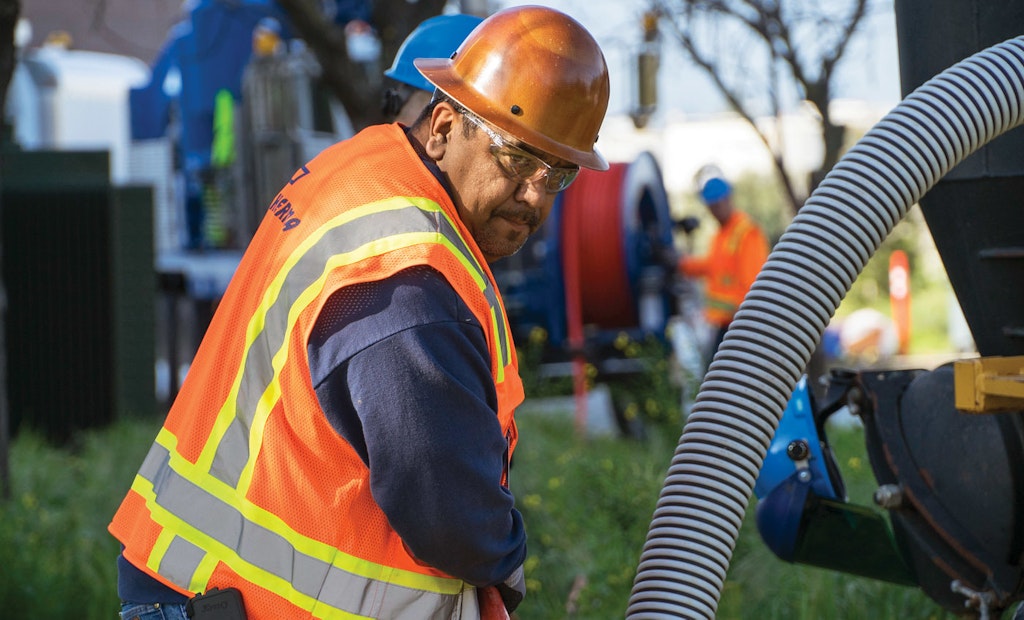
Educating workers on all potential hazards should be part of safety training. Knowing why they should wear PPE even when there are no obviously visible hazards encourages buy-in.
Interested in Safety?
Get Safety articles, news and videos right in your inbox! Sign up now.
Safety + Get AlertsIt’s easy to make a list of personal protective equipment for your workers — less simple is determining where and when that PPE is required.
For example, when people think of hard hats, it often conjures images of city high-rises and overhead dangers like crane work. In reality, just about every piece of equipment with moving parts has the potential for concussive trauma, and hard hats should be worn whenever and wherever that equipment is used.
Educating workers is important in this respect because people will always be more likely to don appropriate gear when they understand the danger.
“When we talk PPE, most people think: It’s a hat I put on or it’s something I put in my ear,” says Dan Vroom, customer training lead for Vermeer. “But they need to understand that it’s because a drill rod could come out or this thing can swing down and hit somebody. Then they realize, ‘Oh, that’s why I should wear it. OK, now I will.’ It’s that awareness that will cause things to change.
Vroom tells of a specialist who was conducting a training demo when an improperly latched strong-arm swiveled out.
“That arm came down and hit the specialist on the hard hat and just laid him out cold in front of 12 people,” Vroom says. “If he hadn’t had the hard hat on, the story would have been completely different. Just because there’s not stuff up high like a crane, doesn’t mean there’s not a lot of moving parts that can cause issues.”
Better safe than sorry
The same goes for many other forms of PPE — the best way to ensure their use is by educating workers on the potential hazards. Safety glasses, or goggles, are another PPE item frequently overlooked. Even around the shop, during maintenance operations, eye protection isn’t something to forget.
“Every joint gets sprayed with grease, and if those aren’t adjusted right, grease can shoot back at the operator,” Vroom says.
Especially in drilling operations, small things can have damaging effects.
“Anytime you’re on a drill site, you should have ear plugs,” Vroom says. “Being on the rig without ear protection means long-term damage to your hearing.”
And even when equipment isn’t in use, it’s important that workers don’t let their guards down.
“If you’re picking drill rods up, or any tooling on the ground, with carbide welded to it, those carbide pieces can rip your hands open,” Vroom says. “It’s all little stuff like that, where you think there are no sharp edges, and it’s just everywhere.”
Vroom admits that mandating glove use can be a delicate topic, because when a contractor is running the functions of the drill on joysticks, it’s nice to not have gloves.
There is a balance all workers must find between being comfortable enough in the job duties to perform efficiently while also staying safe. In the case of gloves, instead of abandoning them completely, a thinner type of glove could do both.
At a minimum, when dealing with waste and hazardous materials, including while mixing drilling fluids, latex gloves should be utilized.
How to be sure
The most difficult aspect of PPE, especially in the excavation industry, is that work sites can vary widely from day to day, meaning requirements vary as well.
Beyond the obvious PPE items like hard hats, earplugs and gloves, there are also air-quality considerations — using air testers and wearing respirators or face masks when necessary. Asbestos and silica are increasing concerns as aging infrastructure fails and replacements become more common.
The most common OSHA violations over the past several years have fallen under respiratory protection standards. Having trained employees who can analyze each job site is really the only way to ensure your workers’ safety.
Developing an internal safety program is also a must for contractors in today’s world, even those with only a few employees. Some companies consider safety violations by employees to be a fireable offense, and though that isn’t always necessary, it is important for employees to feel comfortable and to be encouraged to call out potential safety issues.
“I do see companies taking more ownership of the safety side,” Vroom says. “Anytime it’s their fault, there’s liability and costs to fix the damage, workers’ compensation and time off work. Employers don’t like that, so I feel they are doing more diligence on the safety side; but a lot of them don’t have the programs in place to enforce it yet.”





